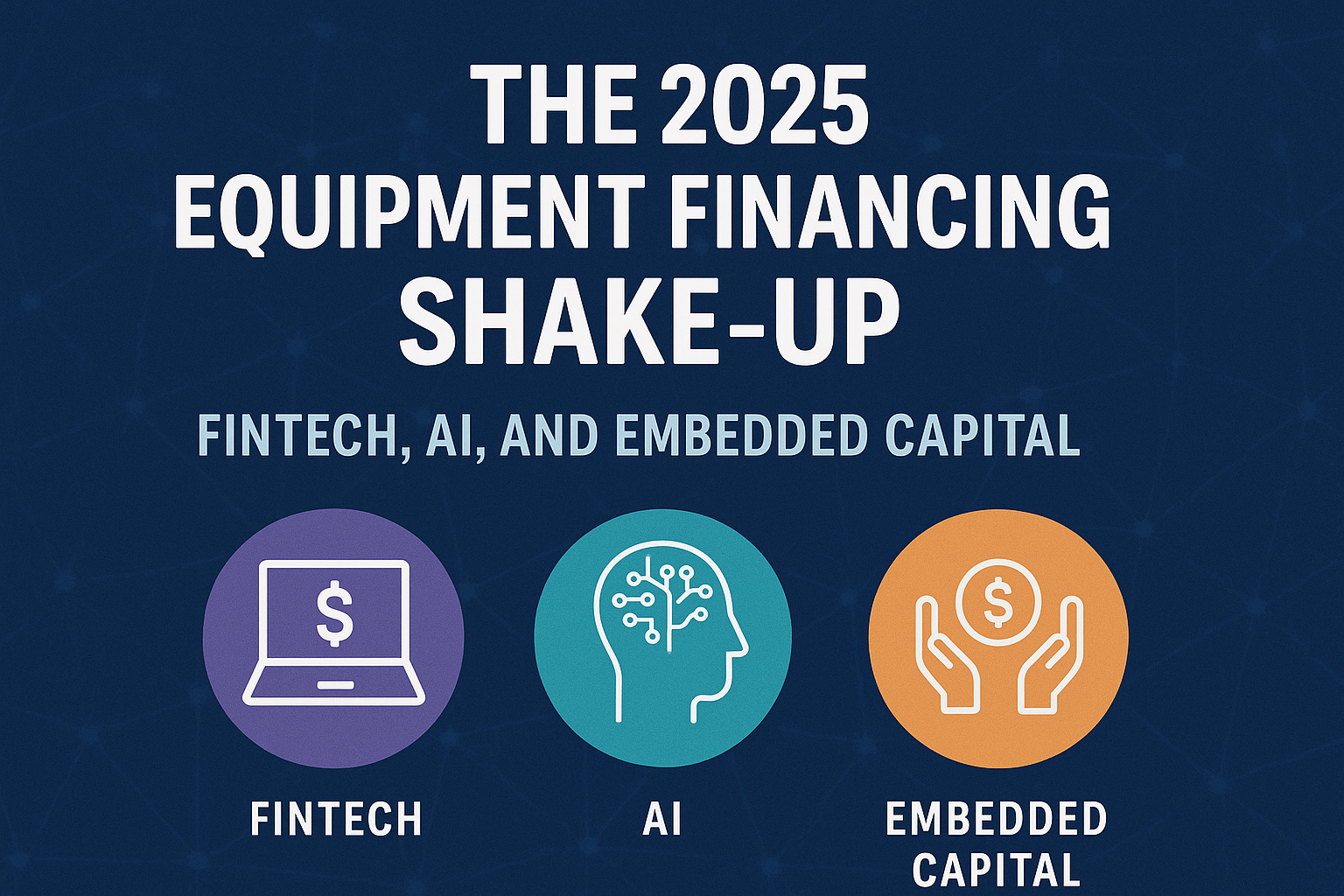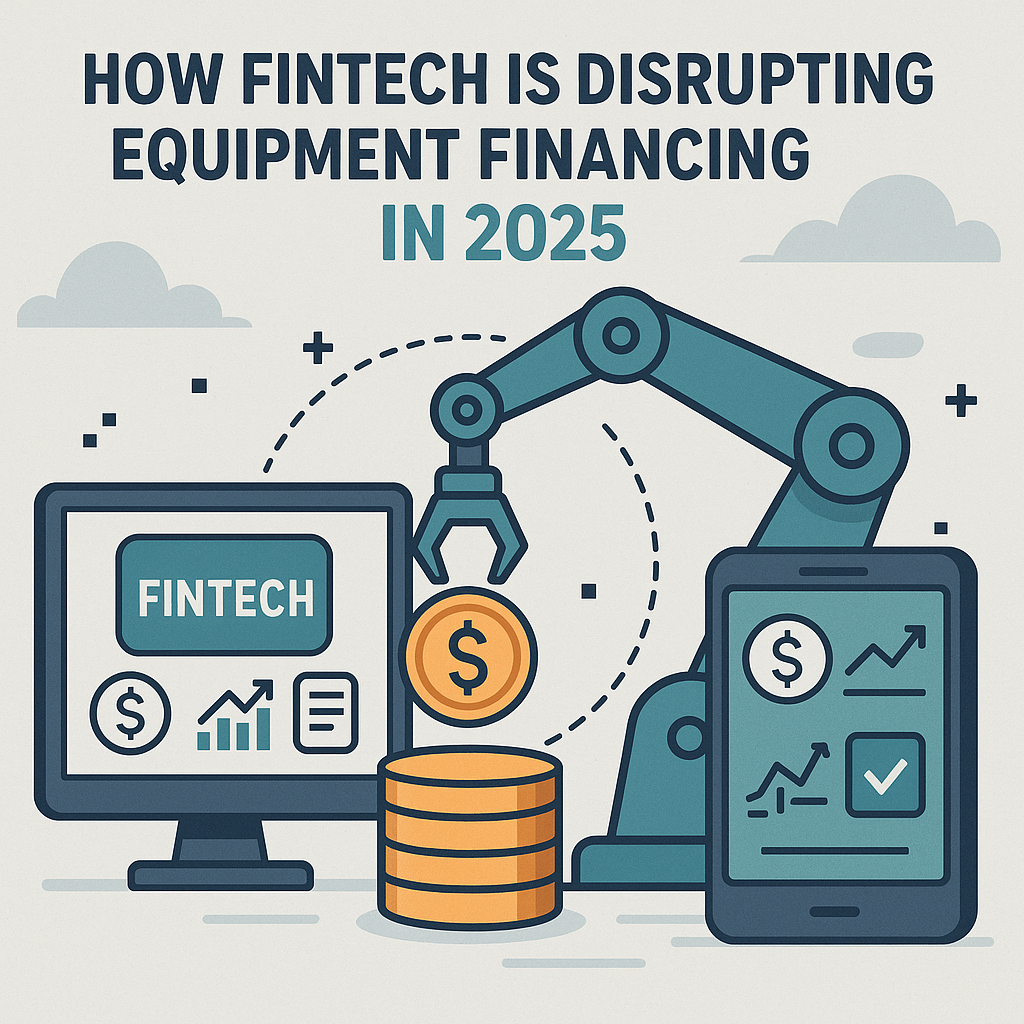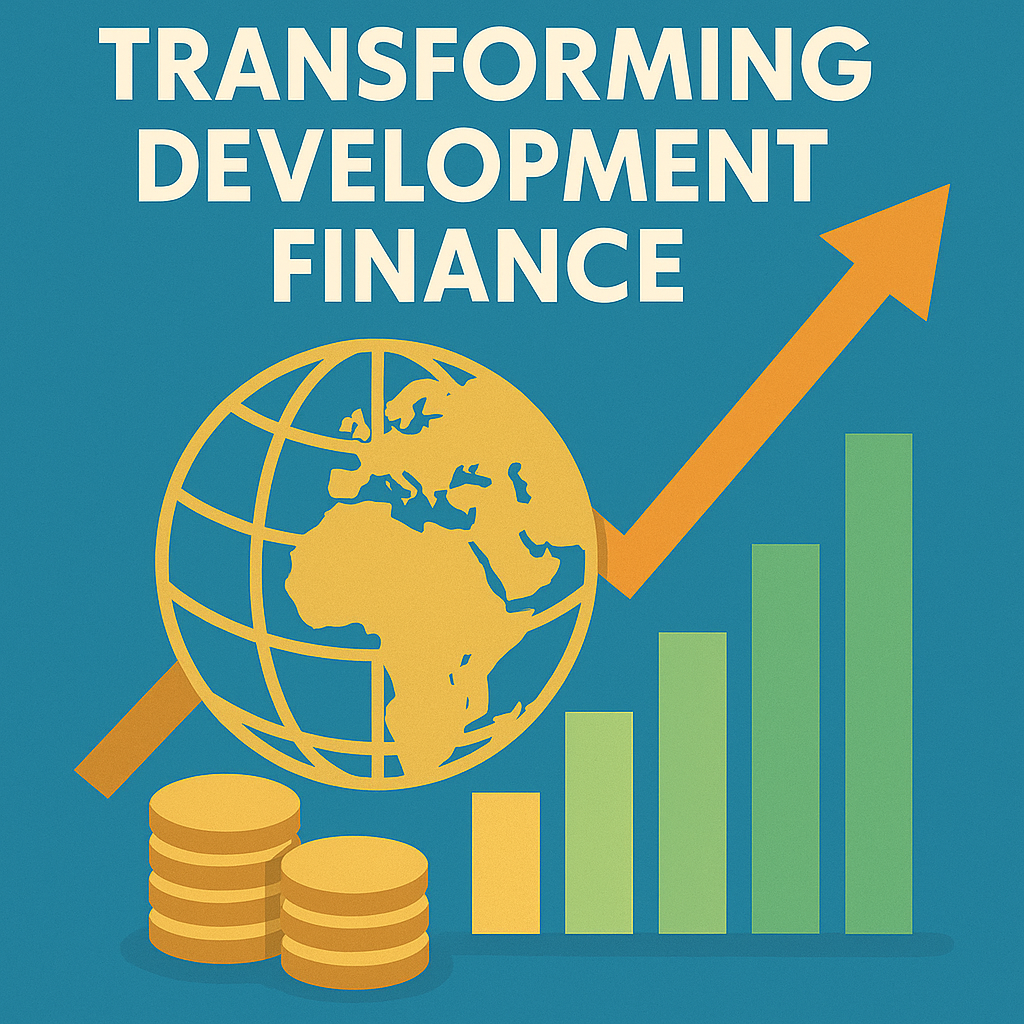2025’s Equipment Finance Reinvention: Fintech, AI & Built-In Capital

Inside the tech overhaul of a $1.4T equipment-finance market
The equipment financing landscape is experiencing its most dramatic transformation in decades. What was once a relationship-driven, paper-heavy industry dominated by traditional banks and captive finance companies is rapidly evolving into a technology-powered ecosystem where artificial intelligence makes credit decisions in minutes, not weeks, and capital is seamlessly embedded into every business transaction.
The Perfect Storm of Change
Three powerful forces are converging to reshape equipment financing in 2025. Traditional lenders, weighed down by legacy systems and risk-averse cultures, are losing ground to nimble fintech startups that can approve equipment loans while their competitors are still processing applications. Meanwhile, artificial intelligence has matured to the point where it can assess creditworthiness more accurately than human underwriters, using thousands of data points that were previously impossible to analyze at scale.
Most notably, embedded finance has leapt from tech hype to everyday standard. Equipment dealers, software platforms, and marketplace operators are no longer content to simply facilitate transactions—they’re becoming financial services providers themselves, offering instant financing options that feel more like buying with a credit card than applying for a traditional loan.
The Fintech Revolution: Speed Meets Sophistication
The new generation of equipment financing companies operates with a fundamentally different philosophy than their traditional counterparts. Where banks might require extensive documentation and multiple committee approvals, fintech lenders are leveraging real-time data streams to make instant decisions.
Consider the typical experience with a traditional equipment lender: a small business owner fills out lengthy applications, provides tax returns and financial statements, waits for credit committee approval, and then negotiates terms over multiple phone calls and emails. The entire process can take weeks or even months, during which equipment prices might change or opportunities might disappear.
Modern fintech platforms have compressed this timeline from weeks to minutes. By integrating with accounting software, banking platforms, and industry databases, they can instantly verify income, assess cash flow patterns, and evaluate equipment values. Machine learning algorithms trained on millions of transactions can spot patterns that human underwriters might miss, leading to more accurate risk assessment and pricing.
This speed advantage isn’t just about convenience—it’s fundamentally changing market dynamics. Equipment dealers report that customers increasingly expect instant financing decisions, similar to what they experience when buying consumer electronics or booking travel. Businesses that can’t provide this level of service are losing deals to competitors who can.
AI-Powered Underwriting: Beyond Credit Scores
Artificial intelligence in equipment financing has evolved far beyond simple credit scoring models. Today’s AI systems analyze hundreds of variables simultaneously, creating sophisticated risk profiles that traditional underwriting methods simply cannot match.
These systems examine obvious factors like credit history and financial statements, but they also consider subtle indicators that human underwriters might overlook. They analyze seasonal cash flow patterns to determine optimal payment structures, assess industry trends to predict future equipment values, and even evaluate the specific use case for equipment to better understand risk levels.
The precision of AI underwriting is particularly valuable in equipment financing because each transaction involves unique assets with different depreciation curves, maintenance requirements, and resale values. A construction company financing earthmoving equipment presents entirely different risks than a restaurant chain purchasing kitchen equipment, even if their credit profiles appear similar on paper.
Machine learning models continuously improve by learning from portfolio performance. When an AI system makes a credit decision, it tracks the outcome over the entire life of the loan, incorporating that learning into future decisions. This creates a positive feedback loop where underwriting accuracy improves over time, leading to better risk assessment and more competitive pricing for borrowers.
The Embedded Capital Revolution
The most transformative trend in equipment financing is the emergence of embedded capital—financing options seamlessly integrated into the purchasing experience. Rather than viewing financing as a separate step in the equipment acquisition process, forward-thinking companies are making it an invisible part of the transaction.
The change is most visible across B2B marketplaces and dealer channels for equipment. When a contractor searches for construction equipment on a digital marketplace, they can now see both purchase and financing options simultaneously. Payment terms, interest rates, and monthly payments appear alongside equipment specifications, making financing as transparent as any other product feature.
Software platforms serving specific industries are becoming particularly powerful distribution channels for embedded financing. A restaurant management system might offer integrated equipment financing for kitchen upgrades. A fleet management platform could provide instant financing for vehicle acquisitions. These integrations eliminate friction and create more natural moments for businesses to access capital.
The embedded approach also enables more creative financing structures. Instead of traditional term loans, businesses might access equipment through subscription models, usage-based payments, or revenue-sharing agreements. These alternative structures better align with how modern businesses actually use equipment, particularly in the age of flexible work arrangements and fluctuating demand.
Industry-Specific Disruption Patterns
Different sectors are experiencing the equipment financing transformation in unique ways, shaped by their specific operational requirements and customer expectations.
In construction and heavy equipment, where purchases often involve six or seven-figure investments, AI-powered risk assessment has enabled lenders to offer more competitive terms for specialized machinery. Real-time equipment telematics data is being integrated into financing decisions, allowing lenders to monitor equipment utilization and condition throughout the loan term.
The healthcare equipment sector has seen explosive growth in flexible financing options, particularly for smaller practices that need expensive diagnostic equipment but have unpredictable cash flows. Subscription-based models for medical equipment are becoming increasingly common, with monthly payments that include maintenance, upgrades, and end-of-term replacement options.
Technology equipment financing has been revolutionized by the rapid obsolescence cycles in the sector. New financing products offer built-in upgrade paths and technology refresh options, acknowledging that a three-year-old server or network equipment may be functionally obsolete long before it’s financially depreciated.
The Data Advantage: Information as Competitive Moat
The most successful players in the new equipment financing landscape aren’t just using better technology—they’re leveraging superior data strategies. These companies understand that in a world where financing decisions happen in real-time, access to accurate, timely information creates insurmountable competitive advantages.
Top fintech lenders are forging deep data alliances with equipment OEMs, dealer networks, service firms, and trade associations. This data ecosystem provides insights that go far beyond traditional financial metrics. They can track equipment performance across entire fleets, predict maintenance requirements, and anticipate resale values with unprecedented accuracy.
The data advantage extends to customer acquisition as well. By understanding exactly when businesses are most likely to need equipment financing—based on seasonal patterns, growth stages, or industry cycles—lenders can proactively offer capital rather than waiting for applications to arrive.
Privacy and security considerations are paramount in these data-driven approaches. Successful companies have invested heavily in compliance infrastructure and transparent data governance practices, recognizing that customer trust is essential for sustainable growth in financial services.
Regulatory Adaptation and Compliance Innovation
The rapid evolution of equipment financing technology has created new regulatory challenges and opportunities. Traditional banking regulations were designed for relationship-based lending with extensive documentation and long approval processes. Regulators are now grappling with how to oversee AI-driven credit decisions and embedded financing products.
Progressive fintech companies are working closely with regulators to develop new compliance frameworks that maintain consumer protections while enabling innovation. This includes creating audit trails for AI decision-making, ensuring fair lending practices in algorithmic underwriting, and maintaining appropriate capital reserves for new financing products.
The regulatory landscape varies significantly across jurisdictions, creating both challenges and opportunities for companies operating in multiple markets. Some regions have embraced regulatory sandboxes that allow fintech companies to test new products with relaxed compliance requirements, while others maintain stricter oversight of any lending activities.
Market Consolidation and Strategic Partnerships
The equipment financing industry is experiencing a wave of consolidation as traditional players seek to acquire fintech capabilities and fintech companies look for scale and market access. Banks are purchasing AI-powered lending platforms rather than building them internally. Equipment manufacturers are forming strategic partnerships with embedded finance providers to offer integrated financing options.
These partnerships often create win-win scenarios. Traditional lenders bring regulatory experience, capital resources, and established dealer relationships. Fintech companies contribute technological capabilities, data analytics expertise, and agile development processes. The most successful combinations preserve the innovation culture of fintech while leveraging the stability and resources of established financial institutions.
The consolidation trend is also being driven by the need for scale in AI development. Training effective machine learning models requires vast datasets and significant computational resources. Smaller players are finding it increasingly difficult to compete on technology alone, leading to acquisition opportunities for larger firms.
The Customer Experience Transformation
Equipment OEMs are teaming up with embedded finance platforms to deliver built-in credit at the point of sale. The transformation from lengthy approval processes to instant decisions represents more than just convenience—it’s enabling entirely new business models and growth strategies.
Small businesses can now make equipment purchases with the same spontaneity as consumer purchases. A food truck operator can spot a deal on kitchen equipment and secure financing before the seller finds another buyer. A contractor can bid on a project knowing they can quickly secure equipment financing if they win the work.
The transparency of modern financing platforms also empowers better decision-making. Businesses can easily compare financing options, understand total cost of ownership, and choose structures that align with their cash flow patterns. This transparency has increased competition among lenders, generally resulting in better terms for borrowers.
Customer service in equipment financing has also been revolutionized. Instead of working with loan officers who might handle hundreds of accounts, businesses now interact with AI-powered platforms that can provide instant answers to questions and make real-time adjustments to financing terms.
Looking Ahead: The Future of Equipment Capital
The equipment financing transformation that began in earnest in 2025 shows no signs of slowing down. Several trends are likely to accelerate in the coming years, further disrupting traditional models and creating new opportunities.
Blockchain technology may eventually enable peer-to-peer equipment financing markets where individual investors can directly fund equipment purchases, similar to how crowdfunding has disrupted other forms of capital raising. Smart contracts could run equipment loans end-to-end—application, funding, servicing, and final handoff or resale.
The Internet of Things will likely play an increasingly important role in equipment financing decisions. As more equipment comes equipped with sensors and connectivity, lenders will have real-time visibility into equipment condition, utilization, and performance. This data could enable more sophisticated financing products, such as usage-based payments or preventive maintenance financing.
Artificial intelligence will continue to evolve, potentially reaching the point where lending decisions are made by AI systems that can explain their reasoning in plain language and adapt to new market conditions without human intervention. This could further accelerate the lending process while maintaining transparency and fairness.
The New Competitive Landscape
The winners in this transformed equipment financing market will be those companies that can successfully combine technological innovation with deep industry expertise and strong risk management practices. Pure technology plays without financial services experience may struggle with the complexities of credit risk and regulatory compliance. Traditional lenders that fail to modernize their platforms will find themselves increasingly irrelevant.
The most sustainable competitive advantages will likely come from unique data access, superior AI capabilities, and strong ecosystem partnerships rather than traditional moats like branch networks or established customer relationships. Companies that can create comprehensive platforms serving all aspects of equipment lifecycle—from initial financing through maintenance and eventual replacement—will be positioned to capture the greatest value.
For companies financing new gear, today’s market delivers unmatched options and ease.However, it also requires more sophisticated evaluation of financing options and partners. The speed and ease of modern financing platforms shouldn’t obscure the importance of understanding terms, comparing options, and working with reputable providers.
The equipment financing shake-up of 2025 represents more than just technological innovation—it’s a fundamental reimagining of how businesses access the capital they need to operate and grow. As fintech continues to mature, AI becomes more sophisticated, and embedded finance becomes ubiquitous, we’re likely witnessing just the beginning of this transformation. The businesses and financial institutions that successfully navigate this changing landscape will be those that put customer needs first while leveraging technology to deliver better, faster, and more accessible financing solutions.




No comment